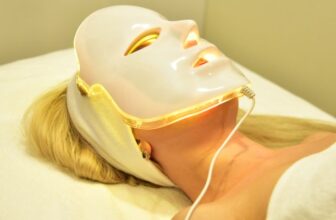
Physical therapy is a dynamic field that offers a wide range of career options for individuals passionate about helping others regain mobility, recover from injuries, and improve their overall well-being. Within the realm of physical therapy, there are three distinct categories of jobs, each with its unique focus, specialization, and requirements. In this article, we will delve into these categories, providing detailed insights into the various job opportunities available, the skills and qualifications required, and the potential growth prospects in each category. Whether you’re considering a career in physical therapy or looking to explore new opportunities within the field, this comprehensive guide will serve as your roadmap to understanding the three categories of physical therapist jobs.
Understanding the Three Categories of Physical Therapist Jobs
Physical therapist jobs can be broadly categorized into three main categories: orthopedic physical therapy, neurological physical therapy, and pediatric physical therapy. Each category focuses on a specific patient population, conditions, and treatment approaches. Let’s explore each of these categories in more detail to gain a comprehensive understanding of the diverse opportunities within the field of physical therapy.
Category 1: Orthopedic Physical Therapy
What is Orthopedic Physical Therapy?
Orthopedic physical therapy specializes in the treatment of musculoskeletal conditions, including injuries and disorders of the bones, joints, muscles, ligaments, and tendons. Physical therapists in this category work closely with patients who have orthopedic injuries or are recovering from orthopedic surgeries. They aim to alleviate pain, improve mobility, restore functionality, and enhance the overall quality of life for their patients.
Skills and Qualifications
To excel in orthopedic physical therapy, professionals need a strong foundation in anatomy, physiology, and biomechanics. They should possess excellent manual therapy skills, including joint mobilization and soft tissue techniques. Additionally, good communication and interpersonal skills are essential to effectively collaborate with patients, physicians, and other healthcare professionals.
Job Opportunities
Orthopedic physical therapists can find employment in various settings, including hospitals, orthopedic clinics, sports medicine centers, and rehabilitation facilities. They work with patients of all ages, ranging from athletes recovering from sports injuries to older adults with degenerative joint conditions.
Growth Prospects
The demand for orthopedic physical therapists is projected to grow steadily in the coming years, driven by an aging population, increased sports participation, and advances in surgical techniques. This category offers promising career prospects, with opportunities for specialization, research, and leadership roles within the field.
Category 2: Neurological Physical Therapy
Exploring Neurological Physical Therapy
Neurological physical therapy focuses on the evaluation and treatment of individuals with neurological disorders, such as stroke, traumatic brain injury, multiple sclerosis, and Parkinson’s disease. Physical therapists specializing in this category aim to improve motor function, balance, coordination, and independence for their patients.
Skills and Qualifications
Professionals in neurological physical therapy require a deep understanding of neuroanatomy, neurophysiology, and the effects of different neurological conditions on motor control. They should be skilled in conducting comprehensive assessments, designing customized treatment plans, and implementing evidence-based interventions.
Job Opportunities
Neurological physical therapists can work in a variety of settings, including hospitals, rehabilitation centers, outpatient clinics, and home healthcare. They collaborate with multidisciplinary teams to provide comprehensive care and support to individuals with neurological conditions throughout their rehabilitation journey.
Growth Prospects
The demand for neurological physical therapists is expected to rise in tandem with the increasing prevalence of neurological disorders, particularly among the aging population. Advancements in technology and research offer exciting opportunities for innovation and specialization within this category.
Category 3: Pediatric Physical Therapy
An Insight into Pediatric Physical Therapy
Pediatric physical therapy focuses on the assessment and treatment of children with developmental delays, congenital disorders, genetic conditions, and injuries. Physical therapists specializing in pediatrics strive to promote optimal physical development, functional abilities, and independence in children from infancy through adolescence.
Skills and Qualifications
Professionals in pediatric physical therapy need to have a comprehensive understanding of child development, growth milestones, and pediatric conditions. They should be skilled in creating engaging therapy sessions, using play-based approaches, and effectively communicating with both children and their families.
Job Opportunities
Pediatric physical therapists work in various settings, including hospitals, schools, early intervention programs, and pediatric clinics. They collaborate with families, educators, and other healthcare professionals to provide holistic care and support to children with diverse needs.
Growth Prospects
The demand for pediatric physical therapists remains consistent, with ongoing research highlighting the importance of early intervention and comprehensive care for children with physical challenges. This category offers opportunities for specialization, working with diverse populations, and making a meaningful impact on children’s lives.
Frequently Asked Questions (FAQs)
What education is required to become a physical therapist?
To become a physical therapist, you need to complete a Doctor of Physical Therapy (DPT) program, which typically takes three years after completing a bachelor’s degree.
How long does it take to specialize in a specific category of physical therapy?
Specializing in a specific category of physical therapy typically requires additional post-graduate education, certifications, and clinical experience. The duration may vary depending on the chosen specialty and individual career goals.
Can physical therapists work independently or do they need supervision?
Physical therapists can work independently, but the requirements for supervision may vary depending on the jurisdiction and the specific practice setting. In some cases, therapists may work under the supervision of a physician or collaborate with other healthcare professionals.
Are there opportunities for research and advancement within the field of physical therapy?
Yes, the field of physical therapy offers opportunities for research, specialization, and advancement. Physical therapists can pursue advanced certifications, engage in clinical research, and explore leadership roles within their chosen specialty.
How does physical therapy contribute to patient recovery and overall well-being?
Physical therapy plays a crucial role in promoting patient recovery and overall well-being by improving mobility, reducing pain, restoring function, preventing further injuries, and enhancing the quality of life for individuals with physical challenges.
Can physical therapists work in non-clinical roles?
Yes, physical therapists can work in non-clinical roles, such as academia, research, healthcare administration, and consulting. These roles often require advanced degrees, specialized knowledge, and skills beyond clinical practice.
Conclusion
In conclusion, the field of physical therapy offers diverse and rewarding career opportunities within three main categories: orthopedic physical therapy, neurological physical therapy, and pediatric physical therapy. Each category presents unique challenges, specialized knowledge, and the opportunity to make a meaningful impact on the lives of patients. By understanding the distinctions and requirements of these categories, aspiring physical therapists can chart their career paths and contribute to the well-being of individuals across various age groups and conditions.




